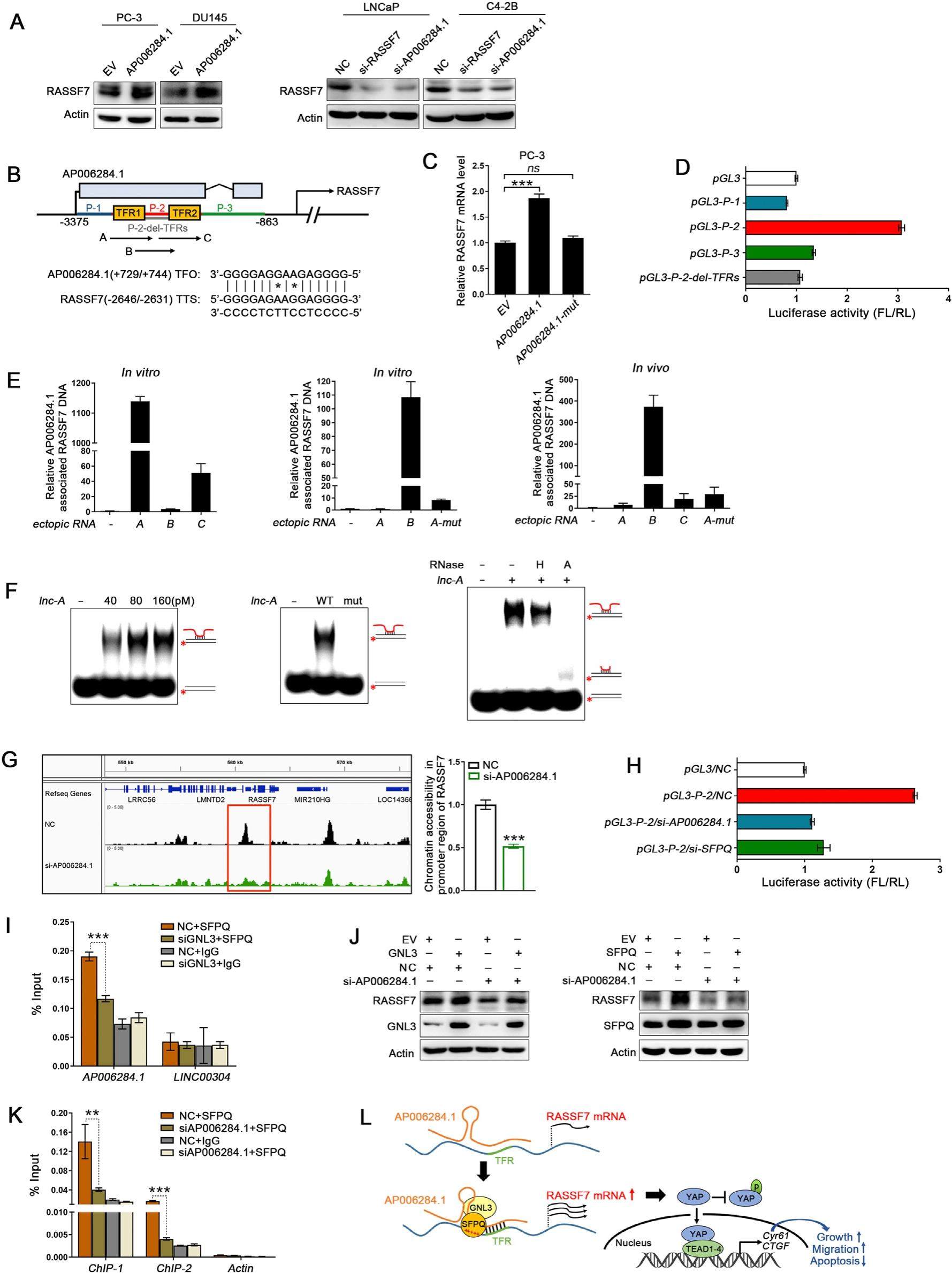
LncRNA-AP006284.1 promotes prostate cancer cell growth and motility by forming RNA-DNA triplexes and recruiting GNL3/SFPQ complex to facilitate RASSF7 transcription


Long noncoding RNAs (lncRNAs) are known to be involved in transcriptional regulation and their deregulation is associated with the development of human diseases such as cancer. LncRNA can directly bind to purine-rich doublestranded DNA sequences through Hoogsteen base pairing to form an RNA-DNA triplex motifs and regulate gene expression. However, its regulatory mechanisms and functions in tumors remain unclear. Here, we report that the LMNTD2 antisense RNA 1 (LMNTD2-AS1, also known as AP006284. 1) is highly expressed in prostate cancer (PCa) and positively correlated with the expression of its adjacent coding gene N-terminal Ras-association domain family 7 (RASSF7). Mechanistically, AP006284. 1 tethers to the RASSF7promoterviaRNA-DNAtriplexesincis-acting manner, which enhances chromatin accessibility and recruits the transcription factor complex GNL3/SFPQ to activate the expression of RASSF7, a repressor of the Hippo signaling pathway. Consistently, overexpression of either AP006284. 1 or RASSF7 inactivated the Hippo signaling and malignant proliferation of PCa cells.
